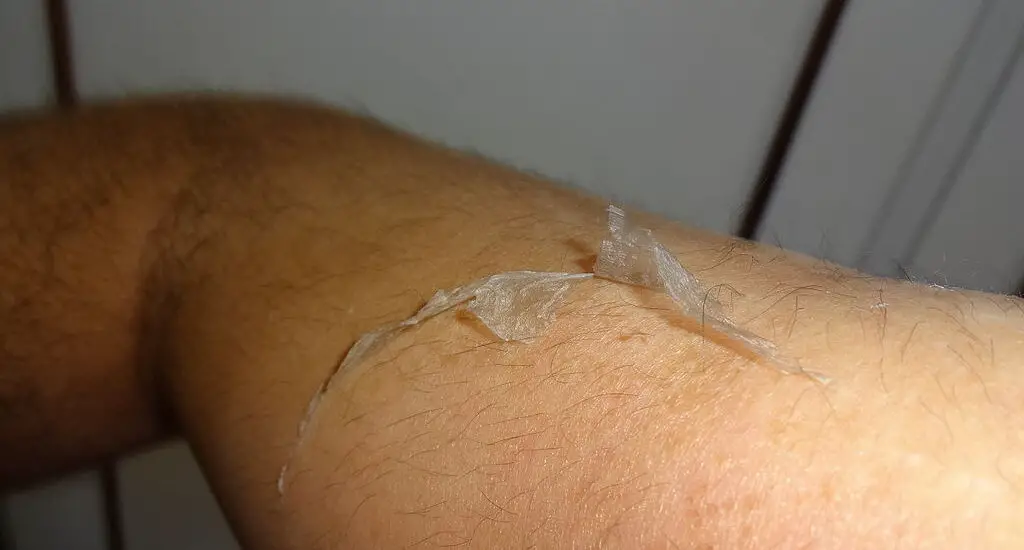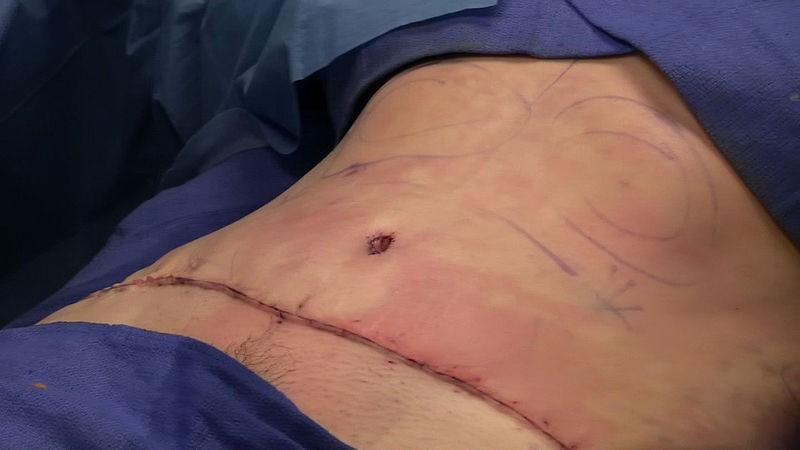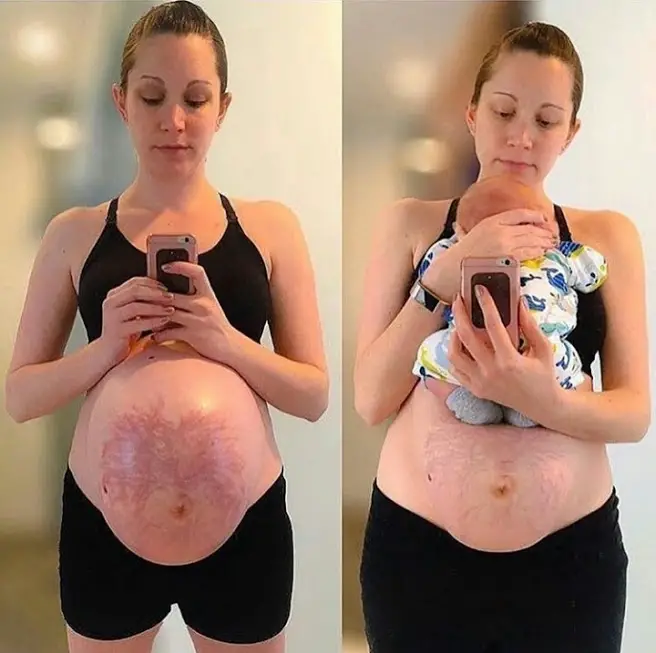This article aims to guide you through understanding and managing skin peeling after laser tattoo removal, ensuring a safe and effective recovery.

Table of Contents
Understanding the Healing Process
Following laser tattoo removal, the skin undergoes a complex healing process. The laser breaks down the tattoo ink into smaller particles, which the body’s immune system then removes. This process can cause the upper layers of the skin to react and peel, similar to a mild sunburn.
The peeling often starts a few days after the treatment and can last for up to two weeks. This is a normal part of the healing process, indicating that the skin is repairing itself. Peeling skin is a sign that the body is working to shed damaged skin cells and replace them with new, healthy ones.
During this time, it’s crucial to monitor the area for any signs of abnormal reactions. These might include excessive redness or blistering, which could indicate an adverse response to the treatment.
Managing Skin Peeling After Laser Tattoo Removal
Dealing with skin peeling requires a delicate balance of keeping the area clean and avoiding further irritation. When cleansing, use lukewarm water and a gentle, non-abrasive soap. Pat the area dry with a soft cloth, avoiding any rubbing or scrubbing. Rubbing or scrubbing can worsen the peeling and lead to irritation or infection.
It’s also important to keep the area free from tight clothing or rough fabrics that might rub against the skin. If peeling skin causes discomfort or itching, resist the urge to scratch.
Scratching can introduce bacteria to the area, increasing the risk of infection and potentially leading to scarring. Instead, apply a cool compress to soothe the area. (Source)
Moisturizing and Hydration
Moisturization is critical in the healing process, helping to soothe the skin and reduce the chances of scarring. Use a gentle, fragrance-free moisturizer designed for sensitive skin. Apply it with light, soft strokes to avoid disturbing the peeling skin.
You can get this Dove Body Love Sensitive Care Body Lotion from Walmart.
Avoid lotions with alcohol or other irritants that can dry out the skin further. Hydration isn’t only topical; it’s also about keeping your body hydrated from the inside.
Drinking plenty of water is essential as it helps the body to heal and replenish new skin cells. Aim for at least 8 glasses of water a day to maintain optimal hydration levels. This will support the skin’s natural healing processes.
Protecting Your Skin
After laser tattoo removal, the skin becomes more vulnerable to sun damage. Sun exposure can not only slow down the healing process but also increase the risk of skin discoloration and scarring.
It’s advisable to keep the treated area covered with clothing or a bandage when exposed to the sun. If covering the area isn’t feasible, use a broad-spectrum sunscreen with at least SPF 30 like this Equate Sport Broad Spectrum Sunscreen. Reapply every two hours, or more frequently if you’re sweating or swimming. (Source)
This protection is vital during the entire healing process. Even more so afterward as the treated area may remain sensitive to sunlight for several months.
Check out these other articles…
Yellow Skin After Laser Tattoo Removal: Causes & Care Tips
Itchy Skin After Laser Tattoo Removal: Effective Remedies
Can You Still See a Tattoo After Laser Removal? Answered
What Should I Put on Skin After Laser Tattoo Removal?
Red Skin After Laser Tattoo Removal: 4 Causes & Solutions
How to Avoid Scarring After Laser Tattoo Removal: Easy Guide
When to Seek Medical Advice
While some degree of redness, swelling, and peeling is normal after laser tattoo removal, certain signs warrant immediate medical attention. These include excessive swelling, severe pain, signs of infection like increased heat, redness, pus, or foul odor, and any allergic reactions.
If the treated area shows signs of abnormal healing, such as open wounds or increasing pain rather than gradual improvement, contact your healthcare provider. They can assess the situation and provide necessary interventions. This might include prescription medication or advice on wound care, to prevent complications and ensure proper healing.

